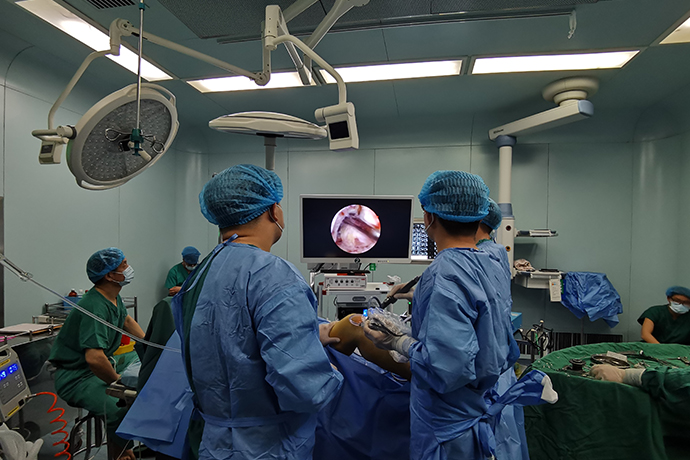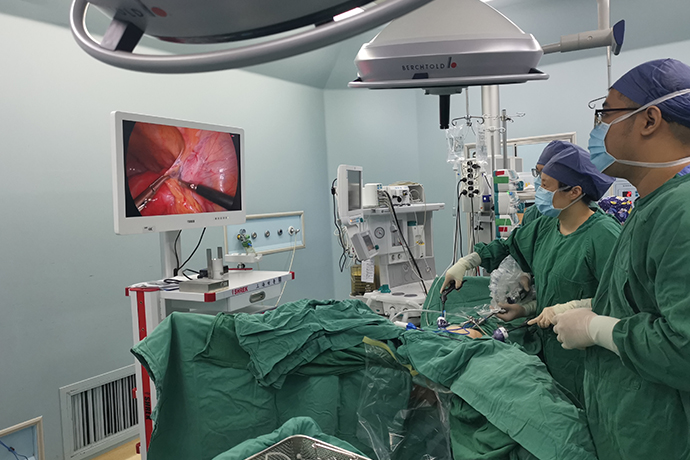【Popular science】Basic principles of mirror support in laparoscopic surgery
Release time: 28 Dec 2021 Author:Shrek
At present, minimally invasive surgery has almost become the mainstream method for most general surgery operations. The advantages of minimally invasive surgery are naturally unnecessary. The success of minimally invasive surgery is inseparable from the tacit cooperation of the minimally invasive team, and this coordination is actually more demanding than traditional open surgery, and the basic requirement for all of this is to support the mirror. It can serve as the eyes of the whole team, and the training of laparoscopic surgery has gradually become more formal, so the excellent surgeon in the future must come from the excellent hand in hand.

Ask the surgeon’s consent before wiping the lens and operate quickly
Before wiping the endoscope, you need to communicate with the surgeon. During important dissection operations, you need to obtain the consent of the surgeon before removing the lens in order to maintain the continuity of the operation and the controllability of the anatomy. Especially when accidental bleeding contaminates the lens, unless the effective picture is completely lost, before cleaning the lens, you should wait as much as possible for the surgeon to perform effective bleeding control such as clamping or pressing before wiping the lens. Remember the original position and angle of the lens when entering and exiting the lens, so that the surgical field of vision can be quickly restored after wiping.
Find and maintain a perspective similar to the open surgery perspective or the first perspective of the main surgeon
The angle of view required for laparoscopic surgery is generally the angle of view that conforms to the conventional anatomical view, or the angle of view that conforms to the habit of the surgeon. The angle of view provided by the endoscope holder should be the angle of view that is most conducive to the operation of the surgeon.
Maintain the operating point of the ultrasonic knife in the center of the screen
Try to keep the ultrasonic scalpel in the center of the picture, with the nine-square grid as the limit, the ultrasonic scalpel should be located in the middle grid, especially in the center. Of course, you should not shake the lens frequently in order to deliberately keep it in the center. The lens should be moved with creep (below).
Move with the operating point-move slowly
The assistant should focus his hand on the poke hole, follow the support provided by the trocar, and move the lens with breath, so that the lens is excessively smooth. Make the picture have an "anti-shake" effect. It is convenient for the surgeon to focus on the operation.
The size of the field of view needs to be dynamically adjusted with the operation-keep the center position fixed, have appropriate acceleration and deceleration, and avoid shaking
The advance and retreat of the lens should be based on the actual needs of the operation. When the main knife and assistant need to see a larger field of view, the lens should be moved back, and for fine operation, it should be close to the operating area. When the energy device is fired, in order to avoid splashing smoke from polluting the lens, the lens needs to be retracted later. There should be appropriate acceleration and deceleration during the forward and backward process (similar to the operation of an elevator so that the occupants will not feel obvious discomfort) to avoid sudden movement and sudden stop to produce "vertigo". This is similar to the "creep" when the lens moves up, down, left, and right or rotates.
Let the line of sight and the ultrasonic knife have a suitable angle
In order to facilitate the operation of the main surgeon, the direct front of the surgeon’s line of sight should have a suitable angle with the ultrasonic knife. Generally, the angle between 30°and 120°is appropriate.

- Recommended news
- 【General Surgery Laparoscopy】Cholecystectomy
- Surgery Steps of Hysteroscopy for Intrauterine Adhesion
- [Gynecological Hysteroscopy] Techniques for Preventing and Treating Complications of Hysteroscopic Surgery
- [Gynecological Hysteroscopy] Hysteroscopic Adhesiolysis
- [Gynecological Hysteroscopy] IUD Removal under Hysteroscopy